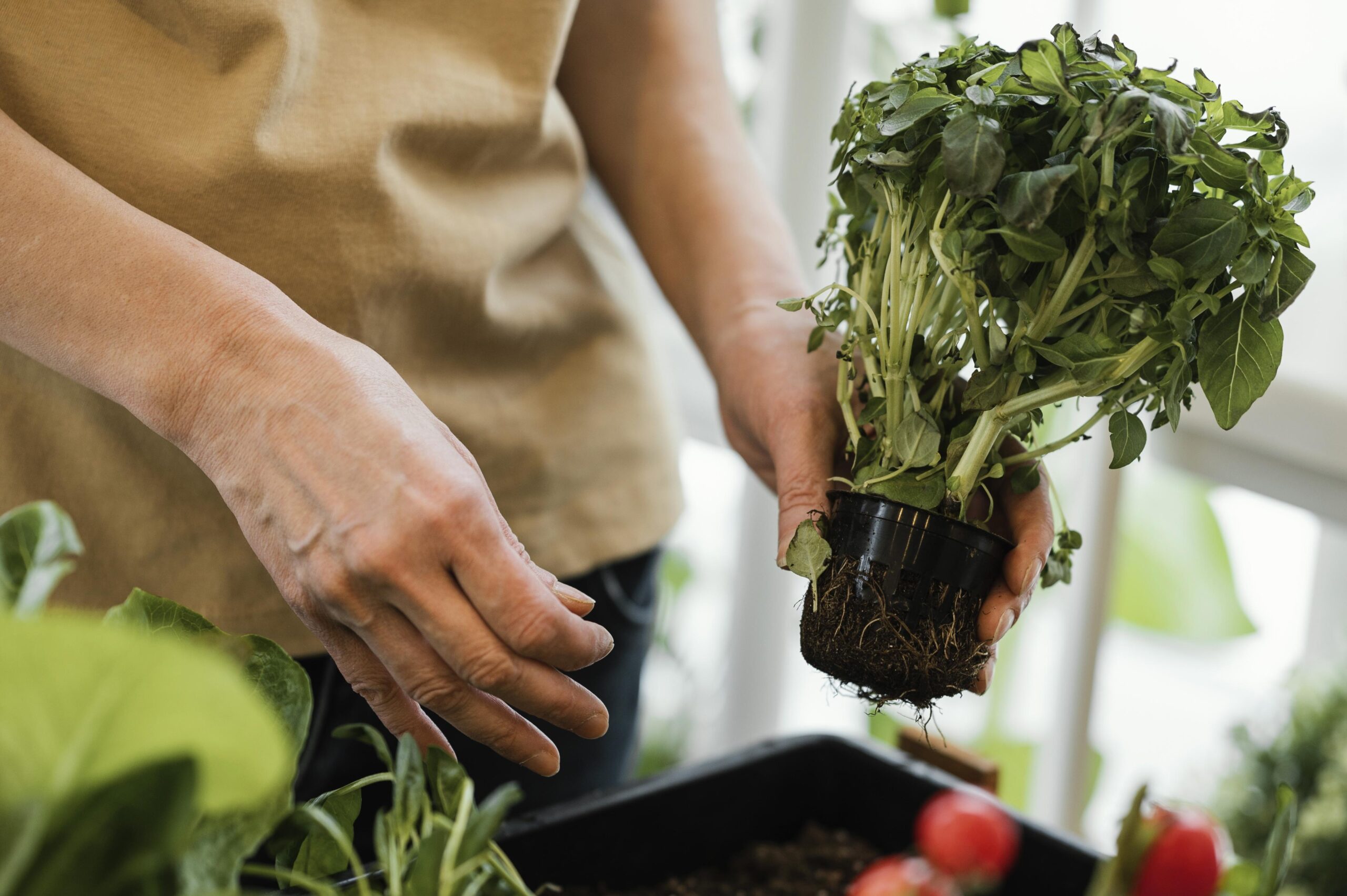
Forget wilting basil on the kitchen counter and anemic cherry tomatoes clinging to life on the balcony. Indoor vegetable gardening isn’t just a Pinterest fad – it’s a vibrant, delicious revolution blooming right beneath your skylights. Ditch the seasonal limitations and supermarket blues, because with a dash of ingenuity and these six handy hacks, you can grow vegetables indoor, and your home can become an edible Eden overflowing with fresh, homegrown goodness all year round.
1. Sunlight Savvy: Photosynthesis or Fairy Lights?
Mother Nature’s lamp might be the gold standard, but don’t let gloomy winters or north-facing windows dim your veggie dreams. Harness the power of artificial lights! LED grow lights, specifically designed for plant growth, mimic the sun’s spectrum, promoting healthy photosynthesis and bountiful harvests. Think sleek, modern lamps bathing your leafy friends in gentle, customized glow. No more battling for prime sunshine spots with your philodendron!
Bonus tip: Maximize natural light by positioning your veggie haven near south-facing windows. Use reflective surfaces like mirrors or light-colored walls to bounce precious photons onto your precious plants.
2. Container Capers: From Buckets to Botanical Boutiques
Think beyond terracotta! Upcycle vintage teacups, repurpose old tires, or craft chic planters from reclaimed wood. The possibilities are as endless as your imagination. Get creative with container choices, tailoring them to your plants’ needs and your aesthetic desires. Hanging baskets for cascading herbs, vertical towers for space-conscious climbers, or a whimsical wheelbarrow overflowing with cherry tomatoes – let your planter personality shine!
Pro tip: Drainage is key! Ensure your containers have drainage holes to prevent waterlogging and root rot. Elevate them on pebbles or a rack to allow excess water to escape, keeping your veggie roots happy and healthy.
3. Soil Secrets: From Humble Dirt to Fertile Fortunes
Forget generic potting mix! Craft a custom soil cocktail specific to your chosen vegetables. Leafy greens like lettuce and spinach thrive in light, well-draining mixes, while fruiting veggies like tomatoes and peppers appreciate a richer blend with added organic matter like compost or aged manure. Research the ideal soil composition for your chosen crops and whip up a personalized potting potion that will have your veggies singing (metaphorically, of course).
Sustainability shout-out: Opt for organic soil and compost to nurture your plants and the planet. Bonus points for using recycled materials like shredded leaves or coffee grounds to add valuable nutrients to your mix.
4. Watering Wisdom: From Drippy Deluge to Precise Sprinkles
Overwatering and underwatering – the two arch-nemeses of indoor veggie enthusiasts. Ditch the guesswork and embrace the art of mindful irrigation. Invest in a moisture meter to gauge soil moisture levels, or learn to read the subtle cues your plants send. Wilting leaves? Time for a gentle drink. Soil crusting over? Hold off on the H2O. Remember, consistency is key – aim for regular, moderate watering that keeps the soil evenly moist, not soggy.
Tech-savvy tip: Consider self-watering planters or automated irrigation systems for fuss-free veggie care. These nifty gadgets take the guesswork out of watering, ensuring your plants receive the perfect sip at the perfect time.
5. Culinary Companions: From Solo Sprout to Thriving Community
Don’t let your veggies be wallflowers! Companion planting creates a thriving mini-ecosystem, fostering beneficial insect interactions and deterring unwanted pests. Plant basil and tomatoes side-by-side to repel harmful bugs, or intermingle carrots and lettuce to optimize space and nutrient uptake. Research plant partnerships that benefit each other, transforming your indoor garden into a harmonious, productive community.
Pollinator pals: Attract friendly pollinators like bees and butterflies by incorporating flowering herbs like dill or cilantro into your veggie patch. These buzzing buddies will not only add pops of color, but also ensure bountiful harvests by aiding in fruit and vegetable pollination.
6. Harvest Hacks: From Seedling Sprout to Culinary Creations
Patience, grasshopper! Learn the specific harvesting times for your chosen vegetables. Leafy greens like kale can be enjoyed as “baby greens” when young and tender, while root vegetables like carrots and potatoes need more time to develop their full flavor and nutritional punch. Research the harvesting cues for each type of veggie, ensuring you pluck them at their peak of perfection.
Zero-waste bonus: Don’t toss those veggie scraps! Compost leftover leaves, stems, and peels to create nutrient-rich fertilizer for your next planting season. Close the loop and keep the good vibes (and greens) flowing in your indoor veggie oasis.
So, what are you waiting for? Roll up your sleeves, grab your trowel, and unleash your inner urban farmer!
